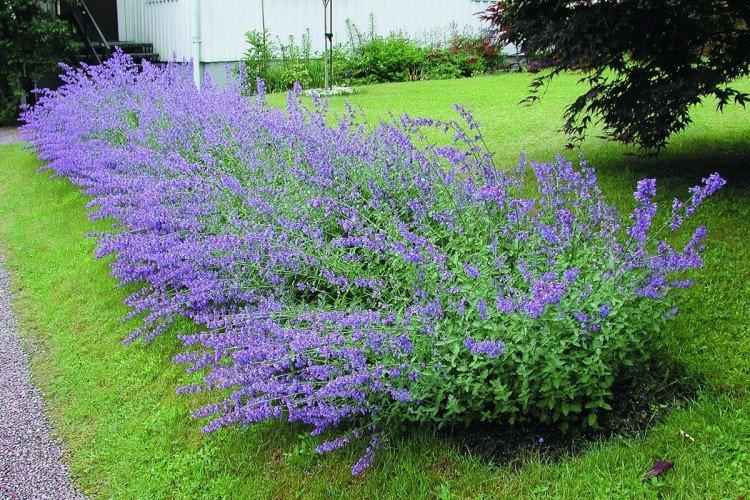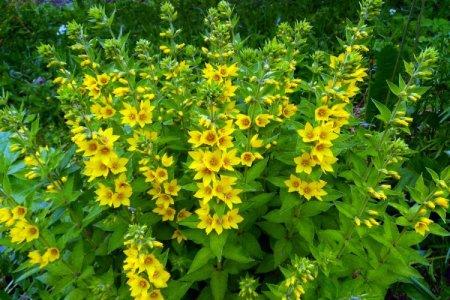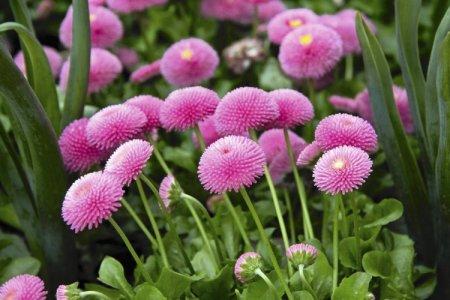
The catnip got its name for a reason. Cats are really crazy about the so-called catnip. But this is not the only interesting feature of the plant. The catnip is beautiful, decorative, useful and is actively used even in folk medicine. Do you want to know more? Then read on!
general information
In nature, catnip is widespread throughout Europe and Asia, so it is initially adapted to the climatic conditions of Russia. There are even resistant species for Siberia and the Caucasus, and there are varieties that thrive in North Africa.
Catnip is a perennial plant, but there are also annuals. The average height is about 1 m or slightly more. Single, heart-shaped leaves with a scalloped edge and exudes that characteristic catnip scent. And yes, catnip is indeed a relative of mint.
The catnip blooms in July with neat whorled inflorescences of blue or white. Occasionally there are other shades like yellow. The flowers themselves are small, resembling a bell or funnel. After flowering, nuts are formed in their place.

Types of catnip
Catnip is also a whole group of different plants that can be classified according to their habitat and specific growth. Here are some of the main types!
Large-flowered catnip
A frost-resistant medicinal plant native to Siberia with blue-violet flowers. It has a very fluffy flowering corolla and thin green leaves.

Fassen's Catman
A compact ground cover with narrow leaves of a beautiful silvery shade. Inflorescences can be blue or pink. Fassen's cattle bloom early, but very long and profusely.

Multi-cut catnip
Perennial growing on mountain slopes and open meadows. Its stems are low, up to 50 cm, and practically do not branch. Textured inflorescences-spikelets look interesting.

Veined catnip
Another dwarf ground cover species up to 30 cm in height. The leaves of the veined catnip are very pale, but the blue inflorescences stand out the brighter against their background.

Eesky catnip
Very fragrant tall perennial up to 1 m high with thick sturdy stems. Flowers up to 3.5 cm long are grouped on the upper fleecy part of the shoots.

Catman Mussini
It is appreciated for its bright blue-violet flowers and an even more expressive aroma. Essential oils of this type do not contain the very substance that affects the behavior of cats.

Kokand catnip
Alpine variety, especially widespread in Asia. It has numerous straight stems up to 40 cm, which at the same time branch abundantly. The buds are lilac and purple.

Cat mint
Yes, in fact, catnip is not the whole catnip, but its separate group. Just because of such an interesting feature, the name was transferred immediately to the whole genus. Especially interesting are varieties with an unusual aroma - for example, with citrus.

Catnip care
The cattleman is very unpretentious in everyday life, and with minimal care he will delight with his flowering throughout the summer. It also combines wonderfully with roses and heather, and is perfect for border landscaping!
Temperature and lighting
Gray catnip varieties need bright lighting and are not afraid of the sun. Greens grow better in partial shade and do not like the south side too much. In general, the catnip is generally indifferent to temperature and lighting, but some species have some peculiarities.

Watering
A young growing catnip must be watered abundantly, especially immediately after planting. It is watered several times a week, but adults can already be watered less often and only as needed. Gray-leaved varieties are easier to withstand drought.

The soil
Gray-leaved varieties thrive even on the poorest and stony soils. But greens need moist and nutritious soil, but not too damp.

Fertilizers and feeding
Catnip belongs to herbaceous plants, and in general does not need intensive feeding. An excess of fertilizer is more likely to harm the plant. Only in too poor soil is it recommended to add a little compost. Complex feeding will be needed once if you want to stimulate re-flowering.

Pruning
The catnip must be cut and shaped, otherwise it will simply take over the entire garden. In addition, we advise you to cut the shoots after flowering - this way you can stimulate the second wave.

Wintering
In the second half of autumn, the bush needs to be cut by about 2/3 so that it survives the winter better and grows better next spring. In the cold northern regions, the catnip must be covered with spruce branches or special capes.

Planting and breeding
A catnip can be grown directly from seeds, but first they must be sent to the freezer overnight and then left in water for a day. They are planted in a container or directly into open ground, and after 1.5 weeks the first shoots will hatch.
The seedlings are moved to the street in the spring at a distance of up to 50 cm from each other, because the bushes will grow quickly. First, the roots need to be immersed in water for a while, and then planted to the same depth that was in the pots.
Keep in mind that catnip grows worse than some weeds, so the question of reproduction may not arise at all. But as necessary, they boldly cut the overgrown bushes with several stems. First, soak the roots in water, then gently untangle, cut with a knife and seedlings.
If you want to propagate catnip by cuttings, cut them at the beginning of summer from the strongest, but not yet flowering stems. Root them immediately in loose soil with regular watering and shading from the sun. To make the process go faster, you can build a greenhouse. When you see that the cuttings have grown, plant them.

Pest and disease control
The cattleman does not get sick too often due to the plant's good immunity. Powdery mildew affects him in dry hot summers. Then it is worth cutting off all damaged leaves and treating the planting with fungicides. Ticks and whiteflies appear less often, but there are also enough complex preparations here.
In addition, cats attracted by scent can cause very real and significant damage. That is why it makes sense to plant the catnip separately and away from valuable crops.

Catnip - photo
It is impossible to cover all the variety of catnip species in one material. Compact dwarf bushes, tall large-flowered varieties - all this is a fragrant spectacular catnip. Just look!



























